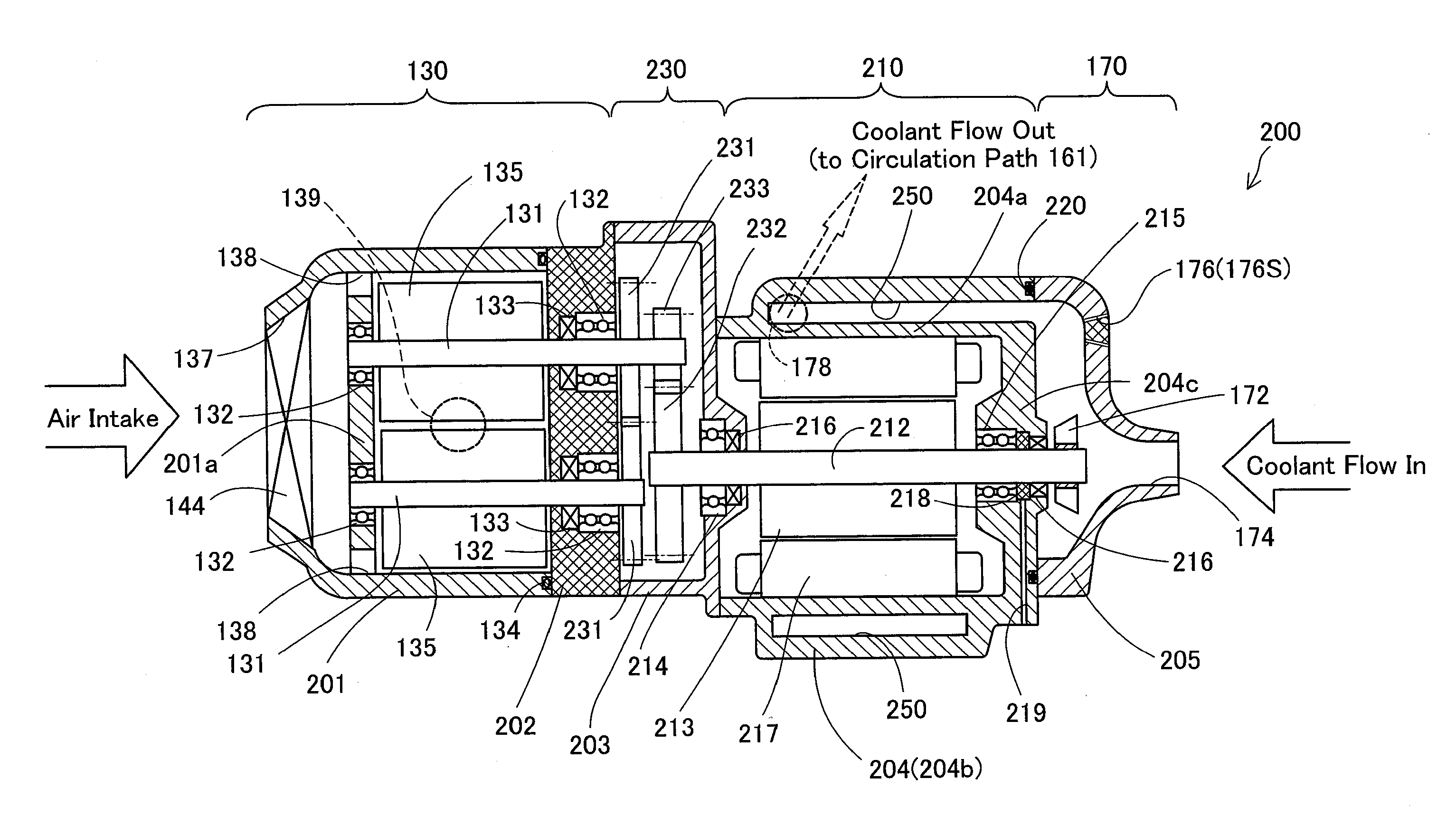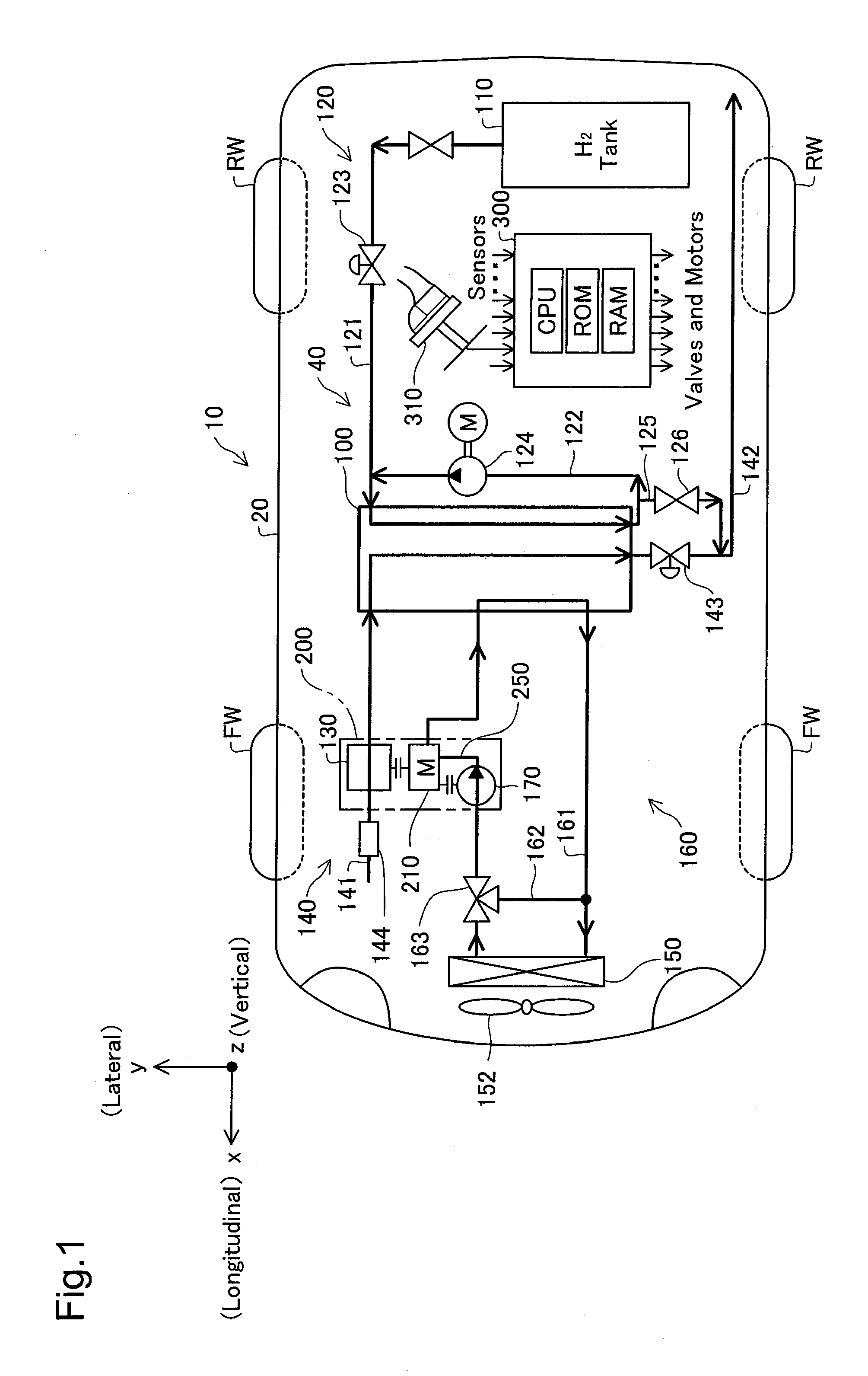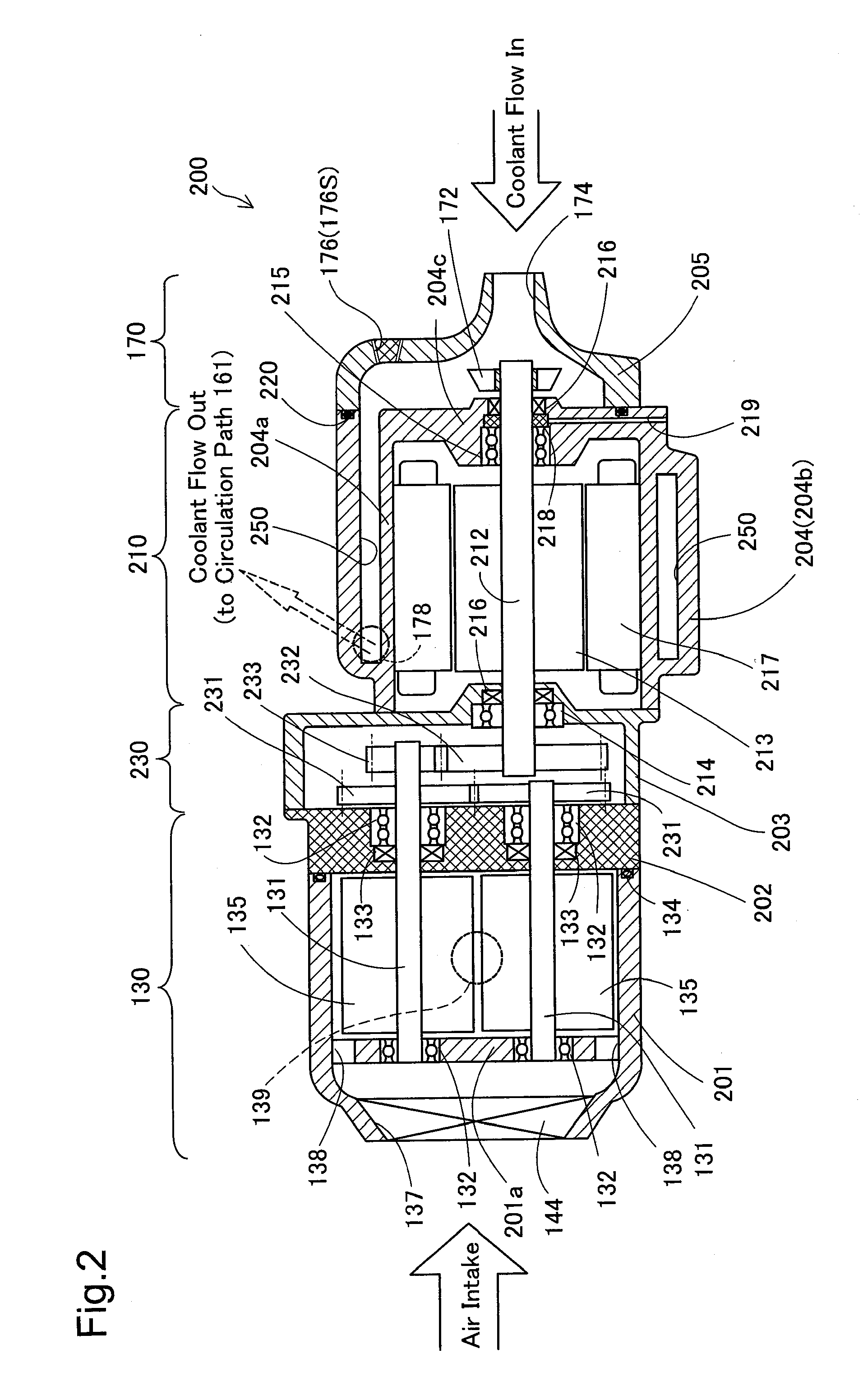Gas consuming system, fuel cell system and vehicle
a fuel cell system and gas consuming technology, applied in the field of gas consuming system, fuel cell system and vehicle, can solve the problems of further size reduction reduce achieve the reduction of the required capacity and size of the motor, reduce the size of the fuel cell system, and ensure the effect of sealing high reliability
- Summary
- Abstract
- Description
- Claims
- Application Information
AI Technical Summary
Benefits of technology
Problems solved by technology
Method used
Image
Examples
Embodiment Construction
[0033]Aspects of the present invention are described in detail with reference to embodiments. FIG. 1 is a plan view schematically illustrating a fuel cell vehicle 10 according to one embodiment of the invention.
[0034]As illustrated, the fuel cell vehicle 10 has a fuel cell system 40 mounted on a vehicle body 20. The fuel cell system 40 has a fuel cell 100, a hydrogen gas supply system 120 including a hydrogen gas tank 110, an air supply system 140 including a compressor 130, and a cooling system 160 including a radiator 150 and a′fan 152. The fuel cell 100 is constructed by stacking power generation modules including membrane electrode assemblies (MEAs) (not shown), each of which is obtained by joining two electrodes, i.e., anode and cathode, to both faces of an electrolyte membrane, and is located in a hood lower region of the vehicle body 20. The installation positions of the fuel cell and the relevant components including the compressor 130 will be described later. The fuel cell ...
PUM
| Property | Measurement | Unit |
|---|---|---|
| force | aaaaa | aaaaa |
| driving force | aaaaa | aaaaa |
| electric power | aaaaa | aaaaa |
Abstract
Description
Claims
Application Information
 Login to View More
Login to View More - R&D
- Intellectual Property
- Life Sciences
- Materials
- Tech Scout
- Unparalleled Data Quality
- Higher Quality Content
- 60% Fewer Hallucinations
Browse by: Latest US Patents, China's latest patents, Technical Efficacy Thesaurus, Application Domain, Technology Topic, Popular Technical Reports.
© 2025 PatSnap. All rights reserved.Legal|Privacy policy|Modern Slavery Act Transparency Statement|Sitemap|About US| Contact US: help@patsnap.com



